Vivo X50 Pro Review
Vivo X50 Pro Review
Vivo's unique camera approach begs many questions
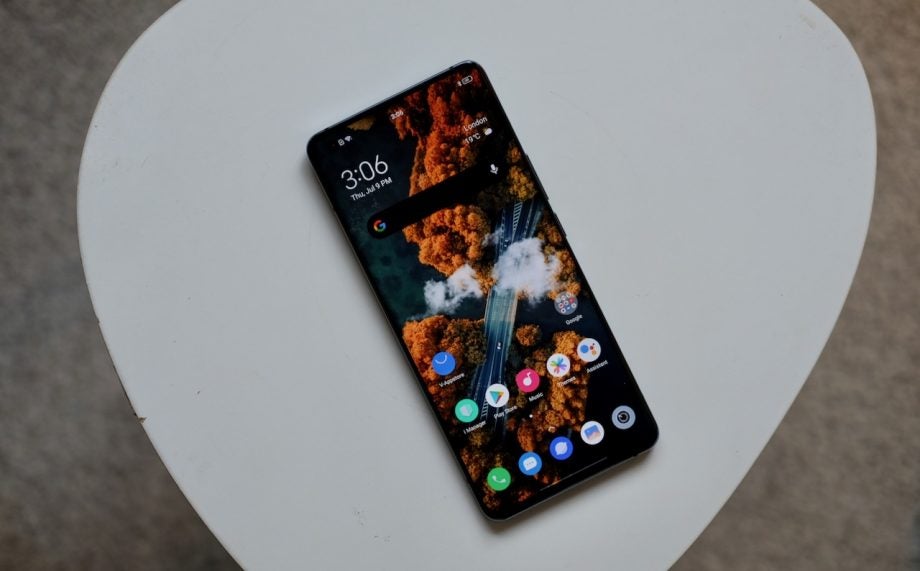
Verdict
The Vivo X50 Pro is one of the surprise packages of the year, providing cutting edge camera technology and a highly desirable design for a mid-market price. Clunky software and availability quirks keep it from being an outright elite contender, but anyone looking for a stylish and great-value all-rounder with a distinctive flavour should add it to their shortlist.
Pros
- Super-steady gimbal camera shots
- Beautiful premium design
- Bright, fast display
Cons
- Ugly, overly busy software
- Questions linger over availability
- You can get better performance for the money
Key Specifications
- Gimbal-style camera
- 5G
- 90Hz display
- Fast charging
Vivo might not be a global name, but this Chinese tech firm knows what it’s doing. The fact that it’s owned by the company behind Oppo and OnePlus should pique your interest now that it’s starting to extend its reach globally.
But that’s not the main reason to be excited about the new Vivo X50 Pro. Vivo has established a reputation for innovation and experimentation in an increasingly staid smartphone space. The Vivo X20 Plus UD was the first phone with an in-display fingerprint sensor, while the Vivo NEX was the first phone to pack a pop-up selfie camera.
What the Vivo X50 Pro has to offer is arguably more exciting than either of those two pioneers. This is the first mainstream phone to feature gimbal camera technology, promising a level of mechanical shot stabilisation that hasn’t been seen before.
This is no gimmick, nor is it the sole point of interest in the Vivo X50 Plus. While the full Western release details remain a little hazy (It’s probably going to be a £500-ish phone), it’ll be highly appealing to those looking for one of the best mid-range phone if you can track one down.
Design and screen – Beautiful high-end design and a fast 90Hz AMOLED
The first thing that struck us about the Vivo X50 Pro is what a strikingly pretty phone it is. Many phones attempt the whole ‘flagship looks for half the price’ thing before, but there aren’t many that have been as convincing as this.
It’s a combination of factors, led by the phone’s dual-curved display edges. Like them or loathe them, they scream premium. Then there is the phone’s skinny 8mm chassis, which weighs a just-so 182g. Not heavy, as such, but just solid enough to whisper ‘premium’ again in case you missed it the first time.
The choice of materials is on point for a 2020 flagship phone, too. It’s not just that the chassis is metal and that the two main surfaces are glass. It’s that the metal frame has pleasingly machined recesses on the top and bottom, and another where the buttons sit on the right hand edge.
That glass rear, meanwhile, has a lovely matte finish in a pleasing grey-blue colour. Together with a justifiably serious-looking Pro camera module (it even says ‘Pro’ on it), I found myself getting distinct Huawei P40 Pro and Samsung Galaxy S20 vibes. Those are design reference points any modern best phone would like to have, let alone one that’s available for potentially hundreds of pounds less.
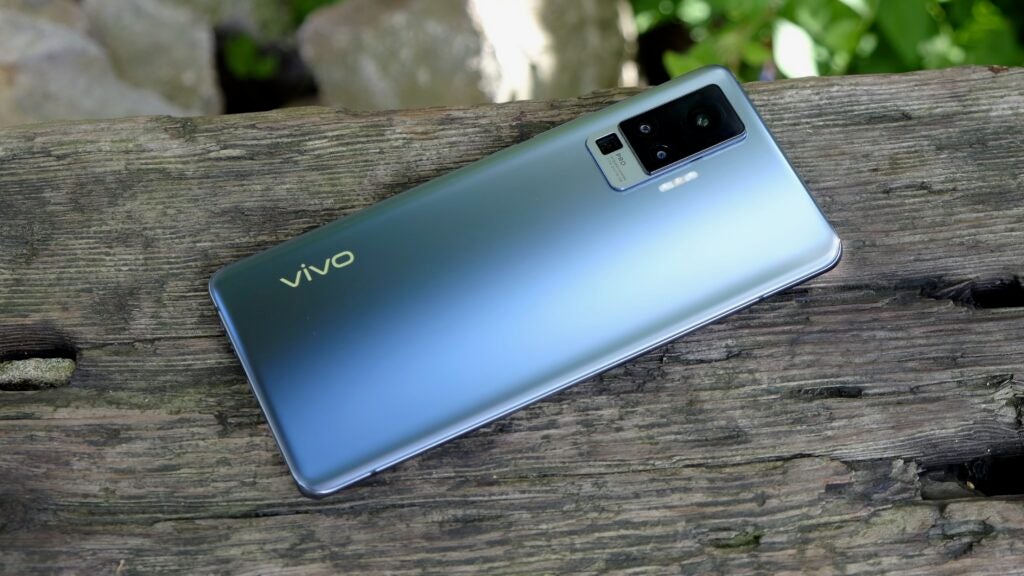
The lack of a headphone jack and the presence of an in-display fingerprint sensor are further flagship indicators, for better or for worse.
Flipping the phone over, you’re confronted with a fine 6.56-inch FHD+ AMOLED display. It gets really bright, and the colours are appropriately vibrant. I preferred to turn those saturated AMOLED colours down a notch from Standard mode to Normal mode (not the most expressive use of the English language), but plenty will be happy to stick.
Also agreeable is the Vivo X50 Pro display’s 90Hz refresh rate. It’s set to automatically adjust its application by default, but I switched it on permanently and didn’t feel that it massively hit the battery life. And the benefits, as seen elsewhere, are more than worth it in terms of general feel.
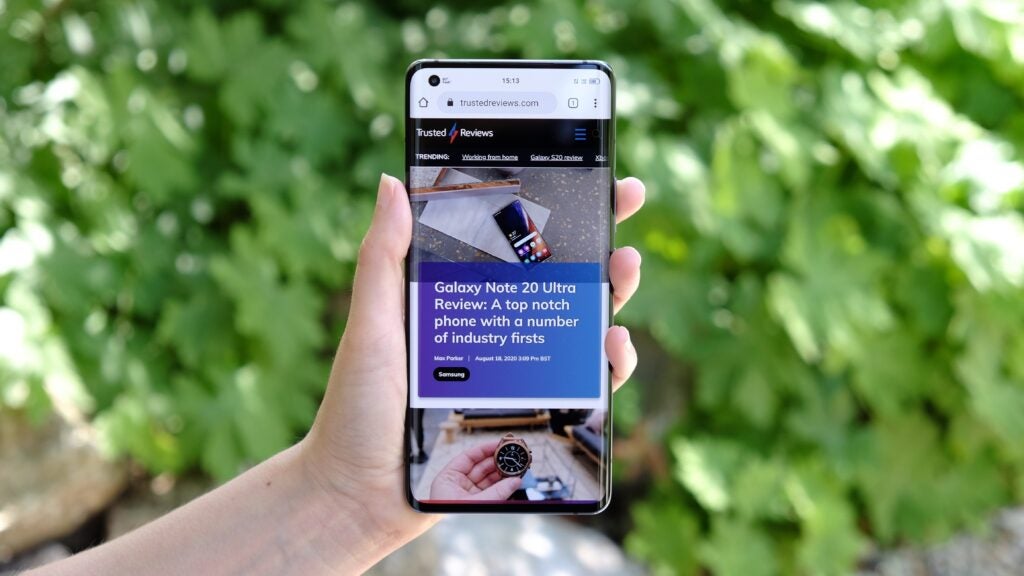
Performance – Another ‘just right’ showing from the Snapdragon 765G
The Snapdragon 765G is the chip manufacturers have started turning to when they want to produce a phone that feels like a flagship, but costs a good deal less.
The OnePlus Nord, the Oppo X2 Neo, and the Moto Edge have all previously utilised the Snapdragon 765G’s ability to drive a 90Hz display and run high-end 3D games on a budget. It works a treat with the Vivo X50 Pro too, especially when paired with a healthy 8GB of RAM.
In general navigation and light tasks, the phone feels super fast and fluid. It’s almost on a par with more capable (and pricier) 90Hz phones like the OnePlus 8 and the Huawei P40 Pro, which run the superior Snapdragon 865 and Kirin 990 respectively.
As with the OnePlus Nord and co. I was able to pick up on the slightest of pauses and stutters when moving through menus and navigating the web. It’s not something most will notice, unless they’ve used a lot of Snapdragon 865 devices like I have. Indeed, it often feels faster than the similarly priced Poco F2 Pro, which runs on the Snapdragon 865 CPU but only sports a 60Hz display.
Of course, if it’s raw performance you’re after, the Poco F2 Pro is the better bet. That’s evident when running 3D games like PUBG, which defaults to the graphical settings just below the very best – though it still looks and runs well even when you crank things up. I also picked up on a few pauses when playing beautiful time-manipulation puzzler The Gardens Between on the X50 Pro. The flowing 2D action-platformer gameplay of Dead Cells ran great though.
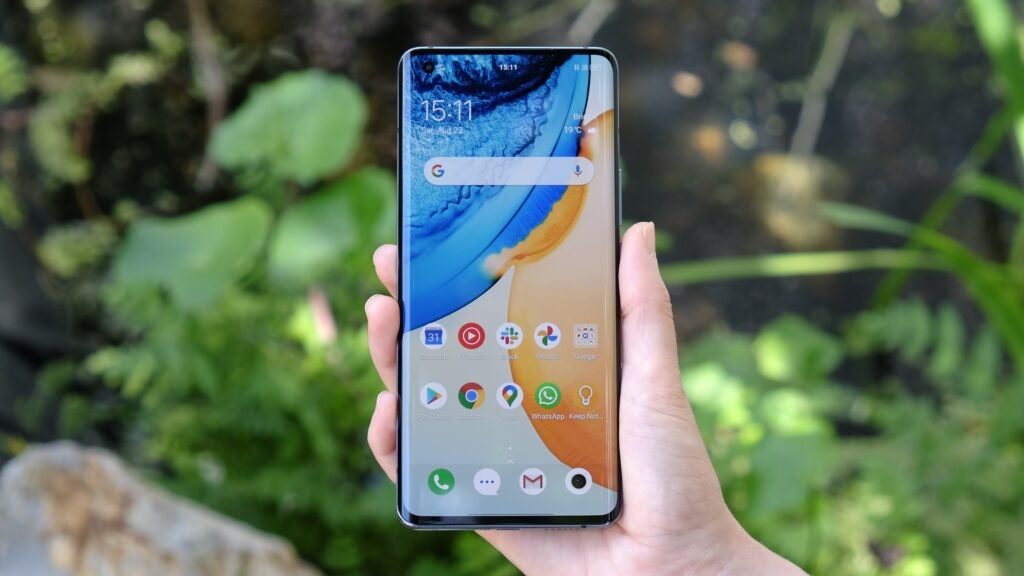
While on the subject of games, it’s worth mentioning that you won’t get flagship-level sound from the provided mono speaker. It’s loud and clear enough, but can’t match the audio output of genuine flagships.
Again, to the vast majority of users, these cut corners and slight performance hitches won’t prove consequential or even apparent. The Snapdragon 765G is fast proving itself to be the Goldilocks ‘just right’ chip of 2020, and the Vivo X50 Pro runs precisely as well as it needs to.
Camera – Steady showing from pioneering gimbal tech
By far the Vivo X50 Pro’s biggest selling point is its gimbal-assisted camera system, which is the first of its kind in a smartphone.
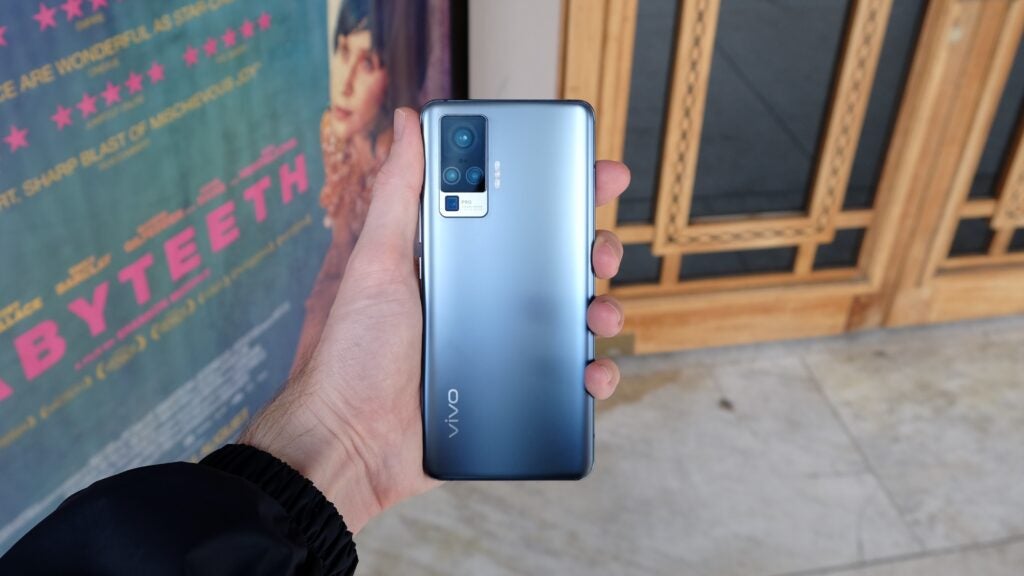
This main 48-megapixel f/1.6 gimbal camera is backed by an 8-megapixel periscope lens that’s good for a true 5X optical zoom, an 8-megapixel ultrawide, and a 13-megapixel 2X ‘portrait’ sensor. A decent spread of components in a less-than-premium package, for sure. But back to that gimbal.
By implementing a double-ball suspension mount capable of triple-axis rotation, Vivo has given us a main camera that can adjust its orientation in three dimensions to compensate for hand movement. This has largely positive repercussions right throughout the camera experience.
In general conditions, your snaps will be steadier than they’ve ever been. It’s slightly uncanny being confronted with the kind of rock-solid viewfinder image that you usually only get when you prop up against a solid surface. Or perhaps that uncanniness comes from the slightly wallowy sense of lag whenever you come to frame your shot.


That effect is further magnified – quite literally – when you zoom beyond the 5X limits of the 8-megapixel periscope lens. Whilst shots up to 60X still won’t look particularly great (there’s way too much cropping involved), it is at least possible to steady your shot to a degree that’s almost comically impossible with the 100x Samsung Galaxy S20 Ultra.


Night and low light photography is another beneficiary of this gimbal. Movement is the enemy of all Night modes, as the shutter is typically left open for longer to let more light in. While you’ll still need to control your subjects, the gimbal ensures a much steadier base as standard. Result: the night time cityscapes looked way better than they typically would from a non-Google or non-flagship phone.

One shot I took of a Church garden at night looks so bright that it verges on the unnatural – I could barely even see the door with my own eyes at the time.
The gimbal tech also benefits video shooting on the X50 Pro, with a noticeable steadying effect when shooting whilst walking. Even when flipping to the 5X zoom, the shots stayed nice and stable.
That’s enough gimbal tech talk. How well does the Vivo X50 Pro actually shoot? Pretty well, but there’s room for improvement. While colours were generally vibrant and well-balanced, there was a tendency to make brighter hues look ever so slightly false. Some of the blue skies captured looked unusually blue, regardless of the camera.
There’s also a slight tendency to overexpose extremely bright areas, which is a common complaint from less than top notch cameras. Focusing, too, could be a little wayward at times, particularly in lesser lighting conditions.

Meanwhile the Wide angle camera is adequate rather than good. Shots taken with it tend to take on a smudgy, defocused look towards the edges – again, a common trait of less than top-end cameras.


I also noticed few instances where I almost seemed to catch the X50 Pro out, taking a snapshot before it seemed to have set itself, in scenarios where I would reasonably expect any other decent camera to have captured the moment. Is this related to the gimbal technology and its inherently wallowy nature? Maybe.
Portrait shots, meanwhile, automatically apply a whole bunch of horrible beauty effects, and it’s not immediately apparent how to deactivate entirely (it’s the left-most option).
Macro shots – which use that so-so ultrawide sensor – occasionally lacked detail, with some oddly grainy bokeh artefacts at times.

Shots taken on the Vivo X50 Pro are good, with particularly strong results when zooming. It’s way more flexible than pretty much any other £500-or-thereabouts cameraphone I can think of. Still, I can’t wait to see this gimbal technology applied to a genuinely top notch shooter with optics, algorithms and image processing to match.
One other tiny little thing that bugged us about the X50 Pro’s camera experience was that Vivo – like Xiaomi and certain other Chinese manufacturers – opts to activate a branded watermark by default. But that’s more an indictment of the phone’s sub-optimal software.
Software – Funtouch 10.5 UI is the X50 Pro’s biggest weakness
The Vivo X50 Pro’s hardware offering is incredibly persuasive. It’s a shame, then, that it falls down on software.
Vivo’s Funtouch 10.5 UI starts from a reasonably solid footing, with a basic home screen look that doesn’t stray too far from stock Android. The icons look round and tidy, and Google Feed is situated to the left of the home screen, as it should be.
But there are lots of small frustrations that amount to a less than optimal experience overall. In no particular order: there are two web browsers, you don’t get Google Calendar by default, and there’s an extra App Store called the V-Store that occasionally and mystifyingly forces itself to the fore.
The presence of superfluous apps like Lazada (a deals app) and Touch ’n Go (an eWallet app) speak to a device that’s been made predominantly with parts of East Asia in mind rather than Western markets. It serves as a reminder that there remains an air of doubt over Vivo’s wider rollout plans.
You’ll see Jovi pop up from time to time in the settings and notifications menu. It turns out to be the name of Vivo’s smart assistant, offering image recogniser and a smart scene tools, but it all seems a little half-baked and inessential.
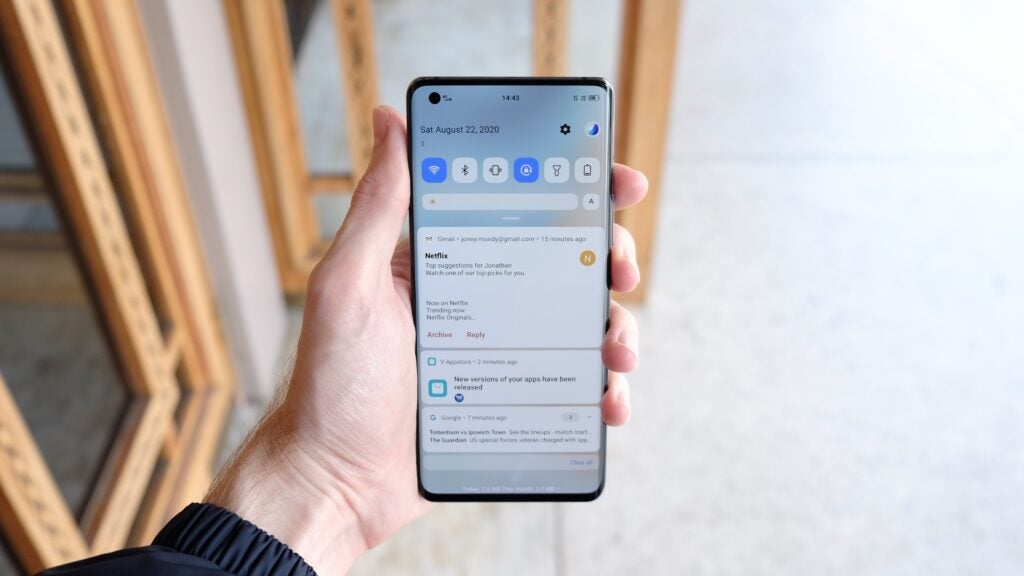
Extraneous apps aside, Funtouch 10.5 UI is full of elements that haven’t been executed quite right. There are a lot of bafflingly indistinct notifications zinging all over the place, to the point where the notification bar verges on the useless as a quick heads-up tool. And some of the notifications you might value most – from WhatsApp, say – seem to go missing until you open the app up. It just feels at times like you’re getting the information Vivo chooses to surface, rather than the information you actually want.
On the plus side, the always-on display function is quite neat, though it’s not active by default for some reason. Elsewhere the offer of split screen access when notifications come in during full screen video content is a nice touch, though again, it doesn’t feel like the smoothest execution.
Battery Life – Decent stamina encourages you to use that camera
Vivo has outfitted the X50 Pro with a 4315 mAh battery, which is roughly the same capacity as that of the similarly proportioned OnePlus 8. In terms of how that translates into stamina, I was able to get through a full extended day consistently without worrying about a recharge, regardless of how intensive a day I’d had.
At the end of a long 15 hours day in which I took around 180 photos and shot four brief 1080p videos, in mostly day time outdoors conditions (which meant the screen was always on full brightness), and with the 90Hz display refresh rate permanently on, I was left with 27% in the tank. That’s quite reassuring.
In terms of media usage, the X50 Pro hits par. One hour of Netflix streaming with the screen set to half brightness sapped 10% of a charge. That’s exactly the same result as the OnePlus Nord, which has the same processor and a similar 90Hz AMOLED display – although it’s worth pointing out that The Nord also has a slightly smaller battery.
Another point in the Vivo X50 Pro’s favour is that it comes with support for 33W fast charging, which can get you from 1% to 57% in just 30 minutes.
Should you buy the Vivo X50 Pro?
The Vivo X50 Pro is an unexpected delight, thanks to a lovely premium design, a fast and fluid 90Hz AMOLED display, and a steady gimbal camera that’s no gimmick. You can get better performance for £500 these days, but most people won’t need it.
Are these design and camera advantages worth spending extra over the OnePlus Nord? To a certain type of user, most definitely. But this needs to balanced against the Vivo X50 Pro’s sub-standard software, which actively hampers that premium impression compared to the Nord.
It’s no exaggeration to say that if Vivo had made the X50 Pro a Google One phone, or gone with a Motorola-style light reskinning, it would be a major contender for the best phone in its class. Its hardware is that good.
As it stands, the Vivo X50 Pro is a distinctively compelling alternative to the usual upper-mid-range/budget flagship crowd – provided you can get your hands on one in your territory, of course, which is far from a given.
How we test phones
We test every mobile phone we review thoroughly. We use industry standard tests to compare features properly and we use the phone as our main device over the review period. We’ll always tell you what we find and we never, ever, accept money to review a product.


